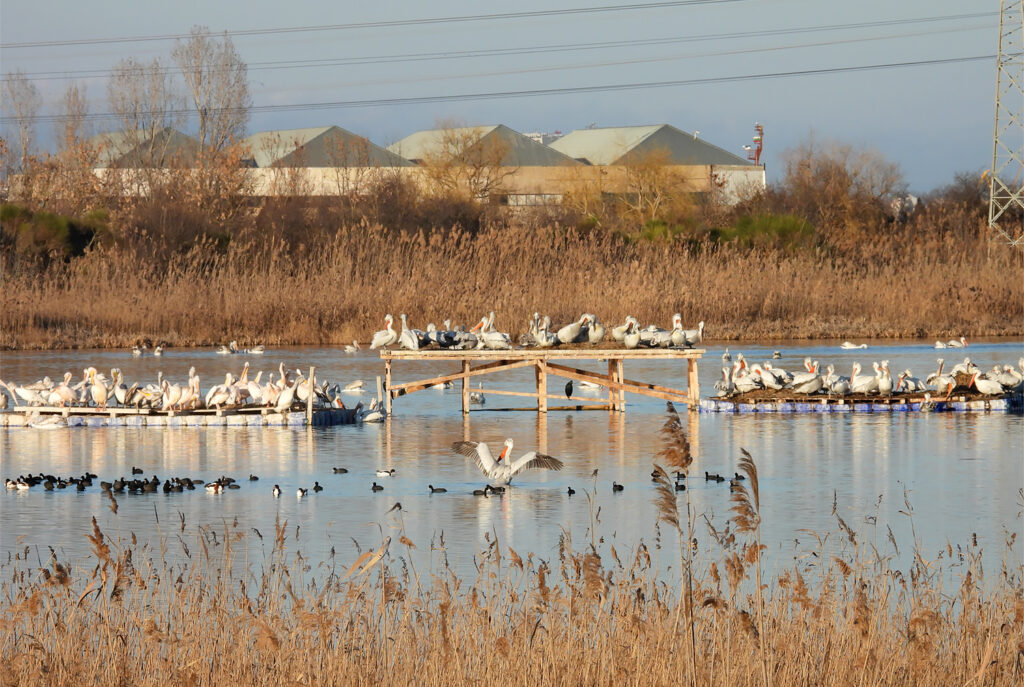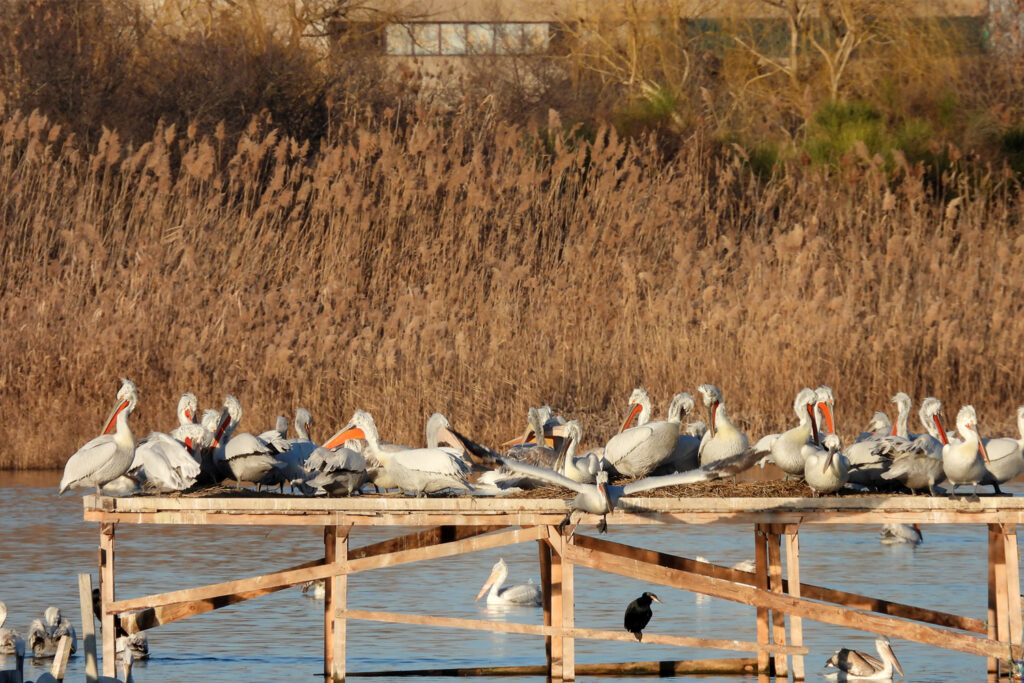The year 2025 began with a historic achievement for Bulgarian conservation efforts. A new breeding colony of the endangered Dalmatian pelican has been established in Bulgaria. The birds have occupied artificial islands built by the Bulgarian Society for the Protection of Birds (BSPB) within the Natura 2000 site “Mandra-Poda Complex” near the city of Burgas. This marks the fourth breeding site for the species in Bulgaria, alongside Lake Srebarna, Persin Island (Belene), and the Kalimok-Brushlen Protected Area.

In late 2021, as part of the international initiative “Pelican Way of LIFE,” a team of BSPB experts and volunteers successfully constructed two floating platforms in the oxidation ponds of Lukoil Neftochim Burgas, located within the boundaries of the “Mandra-Poda Complex” Special Protection Area. The aim was to attract the birds to nest. These ponds are among the most favored roosting and resting sites for Dalmatian pelicans in the Burgas Lakes region. Additionally, human disturbance in the area is minimal, which is critically important for this sensitive species. Each platform spans 40 square meters. These artificial islands quickly became popular resting and roosting spots for both Dalmatian and Great White pelicans.

In August 2024, during the “Atanasovsko Lake Brigade”, a conservation camp organized by BSPB, volunteers helped construct a new wooden platform with an area of 32 square meters. Similar wooden structures have been instrumental in establishing breeding colonies in Persina Nature Park and the Kalimok-Brushlen Protected Area.
The BSPB team are thrilled to share that, in mid-January, Dalmatian pelicans formed a new breeding colony on the artificial islands we created for them. Currently, their experts have identified 23 nests on the floating and wooden platforms. The birds are still actively building nests and mating, suggesting that the number of breeding pairs could increase in the coming days. Over 100 adult Dalmatian pelicans were observed in the area around the islands.

For over 60 years, Bulgaria had only one breeding colony of Dalmatian pelicans – at Lake Srebarna near Silistra. Thanks to targeted conservation efforts and the construction of wooden nesting platforms, two additional colonies were established: in Persina Nature Park in 2016 and in the Kalimok-Brushlen Protected Area in 2021. The last recorded nesting of Dalmatian pelicans in the Burgas area dates back to 1948, in Mandrensko Marsh.
This remarkable conservation achievement represents another significant milestone in safeguarding this majestic species. After nearly 80 years, one of Burgas’s symbolic birds has returned as a breeder to the region – a dream realized for generations of scientists and conservationists. The first chicks are now eagerly awaited in the newly formed colony within the Natura 2000 site “Mandra-Poda Complex.”
The actions on species conservation are carried out within the framework of the “Pelican Way of LIFE“ initiative (LIFE18/NAT/NL/000716), coordinated by Rewilding Europe and funded by the LIFE Programme of the European Union and Arcadia Foundation, and with the assistance in Bulgaria of the Whitley Fund for Nature.